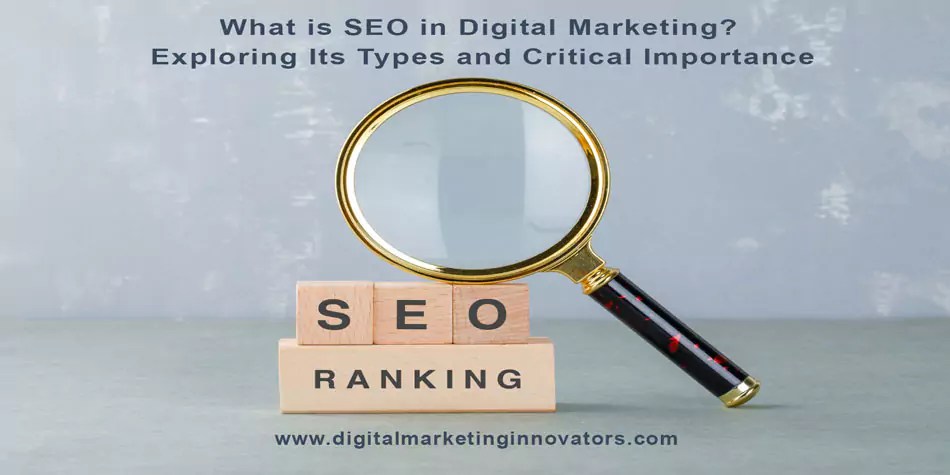Contents
- 1 Understanding the SEO
- 2 Types of Search Engine Optimization
- 3 On-Page SEO: Importance of On-Page SEO
- 4 Key Elements of On-Page SEO
- 5 Off-Page SEO: Importance of Off-Page SEO
- 6 Key Techniques of Off-Page SEO
- 7 Technical SEO: Importance of Technical SEO
- 8 Key Elements of Technical SEO
- 9 Local SEO: Importance of Local SEO
- 10 Key Strategies for Local SEO
- 10.1 1. Google My Business Optimization
- 10.2 Best Practices for Google My Business Optimization
- 10.3 2. Local Keywords Targeting
- 10.4 Best Practices for Local Keywords Targeting
- 10.5 3. Online Reviews Management
- 10.6 Best Practices for Online Reviews Management
- 10.7 4. Local Backlinks
- 10.8 Best Practices for Local Backlinks
- 11 E-commerce SEO: Importance of E-commerce SEO
- 12 Best Practices for E-commerce SEO
- 13 2. Category Page Optimization
- 14 Overall Review of SEO Best Practices
- 15 Common SEO Mistakes to Avoid
- 16 The Future of SEO
- 17 Conclusionary Remarks on SEO
- 18 FAQs about Search Engine Optimization
Discover the essentials of SEO, including its various types and why it’s crucial for online success. Learn how SEO can improve your website’s visibility, drive organic traffic, and boost your search engine rankings.
SEO in Digital Marketing, is a fundamental aspect of digital marketing that focuses on enhancing a website’s visibility & ranking on search engine results pages (SERPs). It involves a combination of strategies, techniques, and tactics to increase organic (non-paid) traffic to a website. Here’s a breakdown of what SEO entails.
Imagine your website as a beautiful store filled with the best products or services you offer. But what if it’s located in a deserted alley with no signs pointing to it? This is where SEO, or Search Engine Optimization, comes in. SEO is the magic that transforms your online presence from a hidden gem into a bustling hub of activity. It’s the art and science of getting your website noticed by search engines like Google, ensuring that when potential customers are searching, they find you first.
Understanding the SEO
SEO stands for Search Engine Optimization, a process that involves enhancing your website to make it more attractive to search engines. When done right, SEO can drive organic traffic, which means visitors who find your site naturally through search results, without the need for paid advertisements.
How SEO Works: Search engines use complex algorithms to determine which pages are most relevant to a user’s query. These algorithms consider hundreds of factors, including keywords, site structure, and backlinks, to rank pages.
Key Components of SEO: To master SEO, you need to understand its core elements: keywords, content, technical SEO, and backlinks. Each plays a vital role in ensuring your site ranks high in search results.
Types of Search Engine Optimization
- On-Page SEO
- Off-Page SEO
- Technical SEO
- Local SEO
- E-Commerce SEO
On-Page SEO: Importance of On-Page SEO
On-Page SEO is critical for achieving high search engine rankings and attracting organic traffic to your website. It encompasses all the actions taken directly on your website to enhance its visibility and relevance in search engine results. By focusing on individual page optimization, you can ensure that each page on your site is search engine friendly, ultimately improving your site’s overall search performance.
Effective On-Page SEO is vital because it helps search engines understand your content and its relevance to specific search queries. This understanding leads to higher rankings, increased organic traffic, and a better user experience, as visitors are more likely to find the information they are seeking.

Key Elements of On-Page SEO
1. Keyword Research:
Definition: Keyword research involves identifying the words and phrases that potential customers use when searching for products, services, or information related to your business.
Importance: By understanding what your audience is searching for, you can create content that meets their needs and aligns with their search intent.
Process: Use tools like Google Keyword Planner, SEMrush, or Ahrefs to find relevant keywords with high search volume and low competition. Focus on long-tail keywords, as they often have less competition and are more specific to user intent.
2. Content Creation
Definition: Content creation and optimization involves producing high-quality, relevant, and engaging content that incorporates your targeted keywords.
Importance: High-quality content is crucial for attracting and retaining visitors, as well as for ranking well in search engines.
Best Practices for Content Creation:
- Write comprehensive, informative, and original content that addresses the needs and questions of your target audience.
- Use your targeted keywords naturally within the content, ensuring that it reads well and provides value to the reader.
- Include multimedia elements such as images, videos, and infographics to enhance the user experience and engagement.

3. Meta Tags Optimization
Definition: Meta tags are snippets of text that describe a page’s content. They appear in the HTML code of a webpage and include title tags, meta descriptions, and headers (H1, H2, H3, etc.).
Importance: Meta tags help search engines understand the content of your page and influence how your page is displayed in search results.
Meta Tags Optimization Tips:
Title Tags: Craft unique and descriptive title tags for each page, incorporating your primary keyword. Keep them under 60 characters to ensure they display correctly in search results.
Meta Descriptions: Write compelling meta descriptions that summarize the content of the page and include relevant keywords. Aim for 150-160 characters to provide a concise yet informative summary.
Headers: Use header tags (H1, H2, H3) to structure your content logically. Include keywords in your headers to signal the importance of those sections to search engines.
4. Internal Linking
Definition: Internal linking involves creating hyperlinks within your content that point to other pages on your website.
Importance: Internal links help search engines understand the structure and hierarchy of your site, distributing link equity (ranking power) across your pages. They also improve user navigation, making it easier for visitors to find related content.
Best Practices for Internal Linking:
- Link to relevant pages within your content to provide additional value and context for your readers.
- Use descriptive anchor text that includes keywords related to the linked page’s content.
- Ensure that your internal linking structure is logical and helps both users and search engines discover your content efficiently.
On-Page SEO is a fundamental aspect of search engine optimization that directly impacts your website’s visibility, user experience, and overall success. By focusing on keyword research, content creation, meta tags optimization, and internal linking, you can enhance your site’s relevance and authority in the eyes of search engines, ultimately driving more organic traffic and achieving higher search rankings. Implementing these strategies consistently will set a strong foundation for your SEO efforts and contribute to the long-term growth of your online presence.
Off-Page SEO: Importance of Off-Page SEO
Off-Page SEO encompasses all the actions taken outside of your website to influence your rankings within search engine results pages (SERPs). Unlike On-Page SEO, which focuses on optimizing elements within your website, Off-Page SEO is all about building your site’s reputation, authority, and trustworthiness in the eyes of search engines and users alike. Effective Off-Page SEO signals to search engines that your site is valuable, relevant, and credible, which can significantly boost your rankings and drive more organic traffic.
Key Techniques of Off-Page SEO
1. Link Building
Definition: Link building is the process of acquiring high-quality backlinks from other reputable websites to your own.
Importance: Backlinks are a critical factor in search engine algorithms. They act as votes of confidence from other sites, indicating that your content is valuable and trustworthy.
Best Practices for Link Building:
- Focus on earning backlinks from authoritative and relevant websites within your industry.
- Use a variety of link-building strategies, such as creating shareable content, engaging in guest blogging, and leveraging relationships with industry peers.
- Ensure that your backlinks come from diverse sources to create a natural and balanced backlink profile.
2. Social Media Marketing
Definition: Social media marketing involves using social media platforms to promote your content, engage with your audience, and attract backlinks.
Importance: While social media signals are not direct ranking factors, a strong social media presence can drive traffic to your site, increase brand awareness, and create opportunities for earning backlinks.
Best Practices for Social Media Marketing
- Share your content regularly on social media platforms where your target audience is active.
- Engage with your followers by responding to comments, participating in discussions, and sharing user-generated content.
- Use social media advertising to boost the reach of your content and attract more visitors to your site.
3. Guest Blogging
Definition: Guest blogging involves writing articles for other websites in your industry to gain exposure and earn backlinks to your site.
Importance: Guest blogging helps you build relationships with other industry experts, expand your reach to new audiences, and acquire valuable backlinks.
Best Practices for Guest Blogging:
- Identify reputable websites and blogs in your niche that accept guest posts.
- Pitch high-quality, relevant, and original content ideas that provide value to the host site’s audience.
- Include a natural and contextual backlink to your website within the guest post, typically in the author bio or within the content if appropriate.
4. Influencer Outreach
Definition: Influencer outreach involves partnering with influential individuals in your industry to gain credibility, visibility, and traffic to your site.
Importance: Influencers have established trust and authority with their audiences, and their endorsement can significantly boost your brand’s reputation and drive traffic.
Best Practices for Influencer Outreach:
- Identify influencers who align with your brand values and have a strong following within your target audience.
- Reach out with personalized and genuine messages, proposing mutually beneficial collaborations such as content sharing, product reviews, or co-created content.
- Foster long-term relationships with influencers to build sustained trust and credibility over time.
Off-Page SEO is a crucial component of your overall SEO strategy, focusing on actions outside your website to enhance its reputation, authority, and trustworthiness. By implementing effective link-building techniques, leveraging social media marketing, engaging in guest blogging, and conducting influencer outreach, you can significantly improve your site’s visibility and rankings in search engine results. Consistently applying these Off-Page SEO strategies will help you build a robust online presence, attract more organic traffic, and achieve long-term success in the competitive digital landscape.
Technical SEO: Importance of Technical SEO
Technical SEO is the foundation of any successful SEO strategy. It involves optimizing the technical aspects of your website to ensure that search engines can crawl, index, and understand your site efficiently. By addressing technical SEO, you improve your site’s readability for search engines, which can lead to higher organic rankings, better user experiences, and increased visibility in search engine results pages (SERPs).
Key Elements of Technical SEO
1. Site Speed Optimization
Definition: Site speed optimization involves enhancing the loading time of your website’s pages to provide a faster and smoother user experience.
Importance: Fast-loading pages are crucial for both user experience and search engine rankings. Slow websites can frustrate users, leading to higher bounce rates and lower engagement, which negatively impacts your rankings.
Best Practices for Site Speed Optimization
Optimize Images: Compress and resize images to reduce their file size without compromising quality.
Leverage Browser Caching: Enable browser caching to store static resources on users’ devices, reducing load times for returning visitors.
Minify CSS, JavaScript, and HTML: Remove unnecessary code, spaces, and comments to reduce the size of these files.
Use a Content Delivery Network (CDN): Distribute your content across multiple servers worldwide to ensure faster delivery to users based on their geographic location.
2. Mobile-Friendliness
Definition: Mobile-friendliness ensures that your website is accessible and functional on mobile devices, providing an optimal experience for mobile users.
Importance: With the increasing number of mobile users, search engines prioritize mobile-friendly websites in their rankings. A responsive design enhances user experience and boosts your site’s visibility.
Best Practices for Mobile-Friendliness
Responsive Design: Implement a responsive design that adjusts the layout and content to fit various screen sizes.
Mobile Usability Testing: Regularly test your site on different mobile devices and browsers to identify and fix any usability issues.
Optimize for Touch: Ensure that buttons, links, and other interactive elements are easy to tap and navigate on touchscreens.
3. XML Sitemaps
Definition: An XML sitemap is a file that lists all the important pages on your website, helping search engines crawl and index your site more efficiently.
Importance: XML sitemaps provide search engines with a roadmap of your site’s structure, ensuring that all relevant pages are discovered and indexed, which can improve your site’s visibility in search results.
Best Practices for XML Sitemaps
Create an XML Sitemap: Use tools like Google XML Sitemaps or plugins like Yoast SEO to generate an XML sitemap for your site.
Submit to Search Engines: Submit your XML sitemap to search engines via their respective webmaster tools (e.g., Google Search Console, Bing Webmaster Tools).
Keep It Updated: Regularly update your sitemap to reflect any changes to your site’s structure, such as new pages, updated content, or removed pages.
4. HTTPS Security
Definition: HTTPS (Hypertext Transfer Protocol Secure) is a protocol that encrypts data exchanged between a user’s browser and your website, ensuring secure communication.
Importance: HTTPS is essential for building trust with users and search engines. It protects user data, enhances security, and is a ranking factor in Google’s algorithm.
Best Practices for HTTPS Security
Obtain an SSL Certificate: Acquire and install an SSL certificate from a trusted certificate authority (CA).
Redirect HTTP to HTTPS: Ensure that all HTTP pages are redirected to their HTTPS versions to maintain consistency and avoid duplicate content issues.
Update Internal Links: Update all internal links to use HTTPS to ensure a secure browsing experience throughout your site.
Technical SEO is a critical aspect of optimizing your website for search engines and users alike. By focusing on site speed optimization, mobile-friendliness, XML sitemaps, and HTTPS security, you can improve your site’s performance, enhance user experience, and boost your organic rankings. Implementing these technical SEO best practices consistently will help you build a robust and search-engine-friendly website, driving long-term success in the competitive digital landscape.
Local SEO: Importance of Local SEO
Local SEO is essential for businesses that operate at a local level, such as restaurants, retail stores, service providers, and other brick-and-mortar establishments. It focuses on optimizing your online presence to attract more business from relevant local searches. This is especially important as many consumers use search engines to find local businesses, products, and services. Effective local SEO helps your business appear prominently in local search results, enhancing visibility, driving foot traffic, and increasing sales.

Key Strategies for Local SEO
1. Google My Business Optimization
Definition: Google My Business (GMB) is a free tool that allows businesses to manage their online presence across Google, including Search and Maps.
Importance: Optimizing your GMB listing is one of the most critical aspects of local SEO. A well-optimized GMB profile can significantly increase your chances of appearing in the Local Pack, Local Finder, Google Maps, and organic search results.
Best Practices for Google My Business Optimization
Claim and Verify Your Listing: Ensure that you claim and verify your GMB listing to take control of your business information.
Complete Your Profile: Provide complete and accurate information, including your business name, address, phone number (NAP), website, hours of operation, and business category.
Add High-Quality Photos: Upload high-quality images of your business, products, and services to attract potential customers.
Post Regular Updates: Use GMB posts to share news, promotions, events, and updates about your business.
2. Local Keywords Targeting
Definition: Local keywords are search terms that include location-specific information, such as the name of a city, neighborhood, or region.
Importance: Targeting local keywords helps you rank for searches that have local intent, making it easier for potential customers in your area to find your business.
Best Practices for Local Keywords Targeting
Conduct Local Keyword Research: Use tools like Google Keyword Planner, SEMrush, or Ahrefs to find relevant local keywords with significant search volume and low competition.
Incorporate Keywords Naturally: Include local keywords in strategic places, such as your website’s meta titles, descriptions, headers, content, and URL structure.
Create Local Content: Develop content that focuses on local news, events, or activities related to your business to attract local traffic.
3. Online Reviews Management
Definition: Online reviews are feedback and ratings provided by customers on various platforms, such as Google, Yelp, and social media.
Importance: Positive online reviews build trust and credibility with potential customers and can improve your rankings in local search results. Search engines consider reviews as a factor in determining the relevance and quality of a business.
Best Practices for Online Reviews Management
Encourage Customer Reviews: Ask satisfied customers to leave reviews on your GMB listing and other review sites. Make it easy for them by providing direct links.
Respond to Reviews: Engage with customers by responding to their reviews, whether positive or negative. Thank them for their feedback and address any concerns promptly.
Monitor and Manage Reviews: Regularly check your reviews and take necessary actions to maintain a positive online reputation.
4. Local Backlinks
Definition: Local backlinks are links from other local websites, directories, and businesses that point to your website.
Importance: Backlinks are a significant ranking factor for search engines. Local backlinks from reputable and relevant local sources can boost your authority and improve your local search rankings.
Best Practices for Local Backlinks
Engage with Local Businesses: Build relationships with other local businesses, bloggers, and organizations to earn backlinks. Consider collaborations, sponsorships, and local events.
Submit to Local Directories: Ensure your business is listed in local online directories, such as Yelp, Yellow Pages, and local Chamber of Commerce websites.
Create Shareable Local Content: Develop high-quality, locally-focused content that other local websites will want to link to, such as local guides, infographics, or community news.
Local SEO is a powerful tool for businesses aiming to attract customers from their local area. By focusing on key strategies like Google My Business optimization, local keyword targeting, online reviews management, and building local backlinks, you can enhance your visibility in local search results and connect with more potential customers in your vicinity. Implementing these local SEO practices consistently will help you build a strong local presence, drive more foot traffic, and grow your business in the competitive local market.
E-commerce SEO: Importance of E-commerce SEO
E-commerce SEO is crucial for online stores to drive organic traffic and increase sales. By optimizing your e-commerce site for search engines, you improve its visibility in search results, making it easier for potential customers to find your products. Effective SEO strategies help you reach a broader audience, enhance user experience, and ultimately boost your conversion rates and revenue.
Best Practices for E-commerce SEO
1. Product Page Optimization
Definition: Product page optimization involves enhancing the individual pages of your products to make them more attractive to search engines and users.
Importance: Optimized product pages rank higher in search results, leading to increased visibility and sales. Detailed and engaging product pages also improve user experience and reduce bounce rates.
Best Practices for Product Page Optimization
Detailed Descriptions: Write unique and comprehensive product descriptions that highlight key features, benefits, and specifications. Include relevant keywords naturally to improve search visibility.
High-Quality Images: Use high-resolution images that showcase your products from multiple angles. Include zoom functionality and additional multimedia, such as videos or 360-degree views, to enhance the user experience.
Optimized Titles and Meta Descriptions: Craft compelling and keyword-rich product titles and meta descriptions that encourage users to click through from search results.
Structured Data Markup: Implement structured data markup (schema.org) to provide search engines with additional information about your products, such as price, availability, and reviews, which can enhance search result listings with rich snippets.
2. Category Page Optimization
Definition: Category page optimization focuses on improving the organization and content of your category pages to make them more relevant and user-friendly.
Importance: Well-optimized category pages help search engines understand the structure of your site and improve user navigation, leading to higher rankings and better user engagement.
Best Practices for Category Page Optimization
Keyword Research: Identify relevant keywords for each category and incorporate them naturally into titles, headers, and Meta descriptions.
Organized Layout: Ensure that category pages are logically organized, making it easy for users to browse and find products. Use clear headings, filters, and sorting options to enhance usability.
Engaging Content: Add informative content to category pages, such as buying guides, tips, and FAQs, to provide value to users and improve search engine rankings.
Internal Linking: Use internal links to connect related products and categories, improving site navigation and helping search engines discover more of your content.
3. User-Generated Content
Definition: User-generated content (UGC) includes reviews, testimonials, and ratings provided by your customers.
Importance: UGC adds authenticity and trust to your site, influencing purchasing decisions and improving search engine rankings by providing fresh and unique content.
Best Practices for User-Generated Content
Encourage Reviews: Prompt customers to leave reviews and testimonials after purchasing products. Make the process easy and user-friendly.
Display Reviews Prominently: Showcase customer reviews and ratings on product pages to provide social proof and build trust with potential buyers.
Respond to Reviews: Engage with customers by responding to reviews, addressing concerns, and thanking them for their feedback. This interaction shows that you value customer opinions and improves your brand reputation.
Leverage UGC for SEO: Use keywords from customer reviews to enhance the relevance of your product pages and improve search engine rankings.
4. Site Architecture
Definition: Site architecture refers to the organizational structure of your e-commerce site, including how pages are linked and navigated.
Importance: A well-organized site architecture enhances user experience, making it easier for visitors to find products and for search engines to crawl and index your site.
Best Practices for Site Architecture
Logical Hierarchy: Create a clear and logical hierarchy with main categories, subcategories, and product pages. Ensure that every page is easily accessible within a few clicks from the homepage.
URL Structure: Use clean and descriptive URLs that include relevant keywords and reflect the site hierarchy. Avoid long and complex URLs with unnecessary parameters.
Breadcrumb Navigation: Implement breadcrumb navigation to help users understand their location within the site and easily navigate back to previous categories.
XML Sitemap: Generate an XML sitemap and submit it to search engines to ensure all important pages are crawled and indexed. Regularly update the sitemap to reflect any changes to your site structure.
E-commerce SEO is essential for online stores to drive traffic, enhance user experience, and increase sales. By focusing on product page optimization, category page optimization, user-generated content, and site architecture, you can create a search-engine-friendly site that attracts more visitors and converts them into customers. Implementing these best practices consistently will help you build a strong online presence, improve search rankings, and achieve long-term success in the competitive e-commerce landscape.
Overall Review of SEO Best Practices
To excel in SEO, it’s important to stay updated with algorithm changes, conduct regular site audits, create high-quality content, and focus on user experience. Staying abreast of Google’s frequent algorithm updates ensures that your strategies align with current best practices, avoiding penalties that can affect your rankings. Conducting thorough site audits helps identify technical issues, such as broken links, slow page speeds, and security vulnerabilities, that might hinder your site’s performance.
Creating high-quality, engaging, and relevant content that addresses your audience’s needs not only attracts organic traffic but also encourages backlinks from reputable sources. Additionally, focusing on user experience by improving site navigation, ensuring mobile-friendliness, and reducing load times can significantly boost your site’s visibility and user retention. These practices will ensure that your site remains relevant and competitive in an ever-evolving digital landscape.
Common SEO Mistakes to Avoid
Avoid keyword stuffing, neglecting mobile optimization, duplicating content, and having a poor site structure. Keyword stuffing, or overusing keywords in an unnatural manner, can lead to penalties from search engines and deter visitors due to poor readability. Neglecting mobile optimization is a critical mistake, as an increasing number of users access websites via mobile devices; a non-responsive site can result in higher bounce rates and lower rankings.
Duplicating content, whether within your own site or from other sources, can confuse search engines and lead to lower rankings due to perceived lack of originality. Having a poor site structure, such as disorganized navigation and broken links, can frustrate users and hinder search engine crawlers from effectively indexing your site. These mistakes can negatively impact your rankings and user experience, making it essential to address them proactively.
The Future of SEO
The future of SEO is exciting, with advancements in voice search optimization, AI and machine learning, and visual search. Voice search is becoming increasingly popular, driven by the rise of smart speakers and virtual assistants like Alexa and Siri. Optimizing for voice search involves focusing on natural language queries and long-tail keywords that match conversational search patterns.
AI and machine learning are revolutionizing how search engines understand and rank content, making it crucial to leverage these technologies for predictive analysis and personalized user experiences. Visual search, powered by advanced image recognition technologies, is transforming how users interact with search engines, enabling them to search using images rather than text. Staying ahead of these trends by adopting new technologies and continuously refining your SEO strategies will keep your SEO strategy effective and innovative, ensuring long-term success in the digital marketplace.
Conclusionary Remarks on SEO
In this digital age, SEO is not just a marketing strategy but a necessity. It is the backbone of a strong online presence, ensuring that your website is visible to your target audience and ranks well in search engine results. By understanding its types, such as on-page, off-page, and technical SEO, and implementing best practices, you can ensure that your website stands out in the crowded online space. Consistently creating high-quality content, optimizing for mobile devices, and staying up-to-date with the latest algorithm changes are key to maintaining and improving your search rankings.
Moreover, using tools and analytics to monitor your performance helps you make data-driven decisions, allowing for continuous improvement. Keep learning, stay updated, and watch your online presence flourish as you adapt to the ever-evolving digital landscape. Investing time and effort in SEO today will yield significant long-term benefits, driving more traffic, increasing engagement, and ultimately leading to higher conversions and business growth.
FAQs about Search Engine Optimization
What is the main purpose of SEO?
The main purpose of SEO is to improve your website’s visibility in search engine results, driving organic traffic to your site.
How long does it take to see results from SEO?
SEO results can vary, but generally, it takes about 3-6 months to see significant changes in rankings and traffic.
Can I do SEO on my own?
Yes, you can do SEO on your own, especially with the plethora of resources available online. However, hiring an expert can provide more advanced strategies and faster results.
What are the costs associated with SEO?
Costs can vary widely depending on whether you do it yourself or hire an expert. DIY SEO can be cost-effective, while professional services can range from a few hundred to several thousand dollars per month.
How often should I update my SEO strategy?
Regular updates are crucial. It’s recommended to review and update your SEO strategy at least every quarter to stay aligned with the latest search engine algorithms and trends.

